The last volleys of the Great Patriotic War
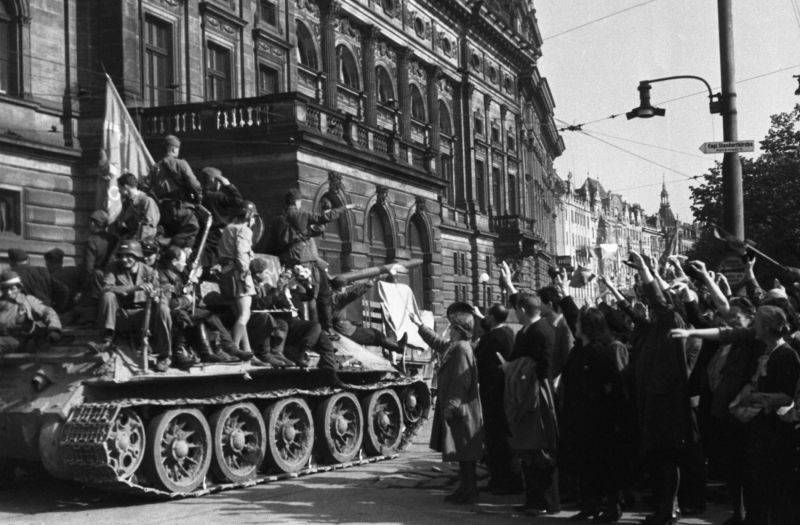
The Agony of the Third Reich. The war in Europe did not end with Hitler's suicide on April 30 and the official surrender of the Reich on May 9, 1945. Zealots, war criminals, and soldiers who didn’t receive timely information about surrender continued to fight.
Many thousands of fighters of the Wehrmacht and their allies (Croatian, Russian and other nationalists) did not add up weapons immediately after the surrender of Germany. The last battles of World War II at the European Theater took place in the Czech Republic and Courland (Latvia), in the Balkans and in the Netherlands.
Battle of Prague
On May 11, 1945, the last strategic operation of the Red Army in the Great Patriotic War ended - the Prague offensive operation, which was carried out by the troops of the 1st Ukrainian Front under the command of I.K. Konev, the 4th Ukrainian Front I.S. Eremenko and the 2nd Ukrainian front R. Ya. Malinovsky. Konev's shock forces, which had just taken Berlin, deployed to Prague. A powerful German group was defending itself in Prague: Army Group Center under the command of Field Marshal Schörner and Army Group South Rendulic (totaling about 900 thousand people).
The German command refused to give up even after the fall of Berlin. They decided to turn Prague into a "second Berlin", they dragged on time to lay down their arms in front of the Americans. On May 5, an uprising began in Prague. The rebels prevented the Nazis from evacuating to the west. They promised to drown the Prague revolt in blood. The Soviet command accelerated the start of the operation - the offensive began on May 6. The German front collapsed under the blows of the Soviet armies. On the morning of May 9, 1945, Konev’s tank armies broke into Prague. German SS divisions put up stubborn resistance. On the same day, advance detachments of the 2nd and 4th Ukrainian fronts entered the Czech capital. From 16 p.m. the Germans began to give up.
On May 10, Soviet troops met with the Allies. The troops of Army Group Center began to surrender en masse. On May 11, the operation was officially completed. However, the persecution and capture of troops, battles with individual fierce enemy groups, and the cleansing of the territory continued for several more days. The Nazis, SS men and Vlasovites sought to save their lives: to leave the Soviet zone of occupation and surrender to the Americans. So, on May 12, near the city of Pilsen, a column of Russian collaborators led by General Vlasov (ROA, Russian Liberation Army) was blocked and captured. On May 15, near the city of Nepomuk, the commander of the 1st division of the ROA Bunyachenko and his headquarters were arrested. On the night of May 12, in the vicinity of the city of Pribram, 7 thousand were eliminated. a group of SS men led by the head of the SS Office in Bohemia and Moravia, Obergruppenführer SS Count von Pückler-Burghaus. who fled from Prague. The Americans refused to let the SS troops into their territory. The Nazis took the last battle and were defeated.
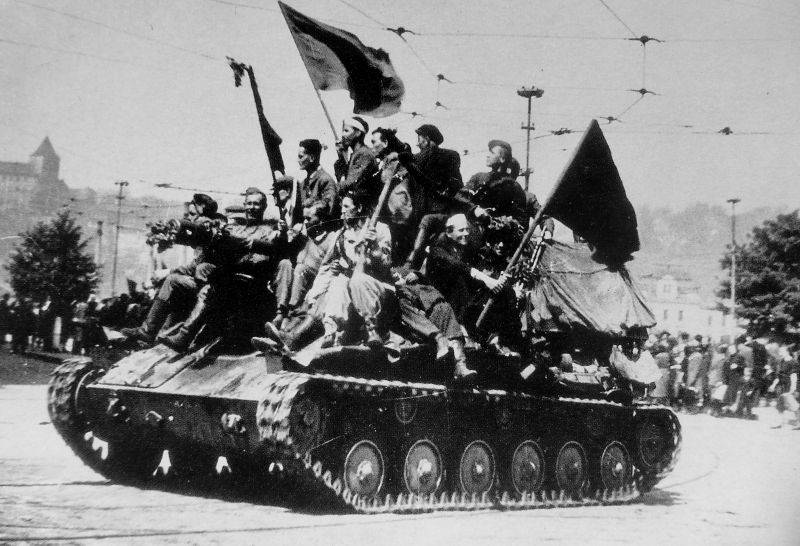
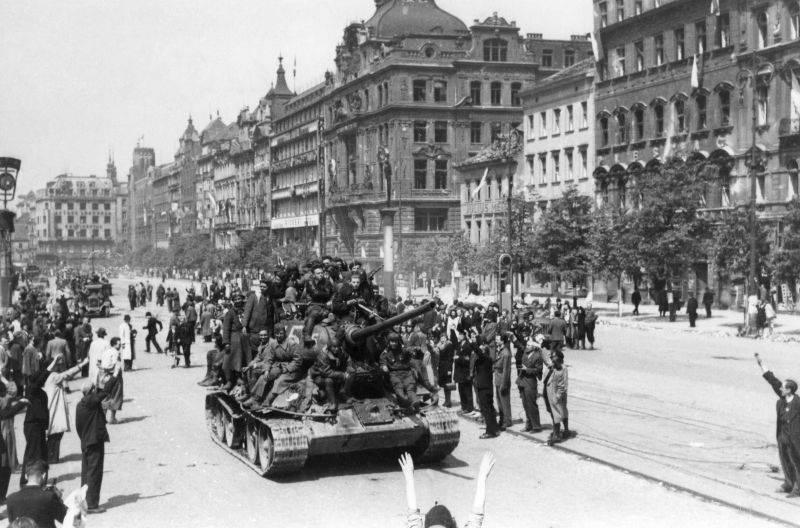
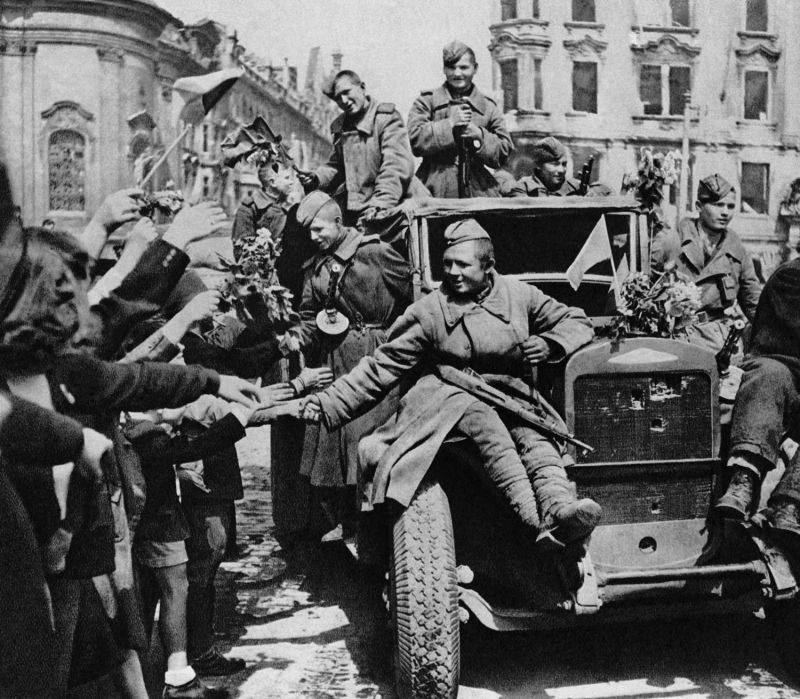
Battle of Odjak
A real battle unfolded in the Balkans between the Croatian Nazis (Ustashi) and the troops of the People's Liberation Army of Yugoslavia (NOAJ) under the command of I. B. Tito. Yugoslav troops in early May 1945 completed the liberation of the Balkans from the Nazis (Army Group E) and the Croatian nationalist divisions. The troops of the Independent State of Croatia (NGH - German satellite), the Ustash, guilty of the genocide of Serbs, Jews, Gypsies, many war crimes (hundreds of thousands of civilians died), did not want to surrender to the NOAU. The same group included Serbian, Slovenian and Bosnian nationalists who were hostile to Tito. These "scumbags" were often destroyed without trial.
Therefore, the Croatian Nazis, by hook or by crook, sought to avoid punishment and fled to Austria, to the British zone of occupation. Some were lucky. The leadership of the Ustash led by dictator Ante Pavelich (NGH), with the help of the Catholic clergy, fled to Austria and Italy, and from there to Latin America or Spain. Pavelich himself first lived in Argentina, entered the inner circle of President Peron, then moved to Spain.
Some nationalists, including Ustashi, were able to leave for Austria, surrendered to the British. However, the British did not need ordinary soldiers. Therefore, they were returned to Yugoslavia, where execution awaited many. Part of the Ustashas was entrenched in the city of Odjak and its environs (modern Bosnia and Herzegovina). The commander of the Croatian detachment was Petar Raikovacic. According to various estimates, the detachment had from 1,8 to 4 thousand soldiers. They fought from April 19 to May 25, 1945. The desperate Croats showed such strong resistance that they were able to repel several attacks by the Yugoslav troops, which suffered heavy losses. It was possible to finally suppress the fierce resistance of the Croatian thugs, pulling up additional artillery forces and with the help of aviation, which dealt several strong blows to enemy positions. After the loss and destruction of the main positions, the remnants of the Croatian garrison tried to break out of the city and leave for the forests on the night of May 24-25. However, they were destroyed. At the same time, the Ustashi in the forest regions continued to conduct a guerrilla war and resisted until 1947.
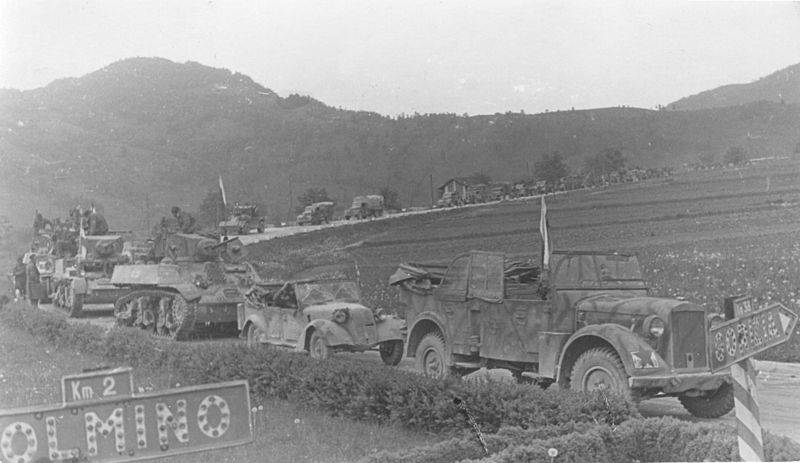
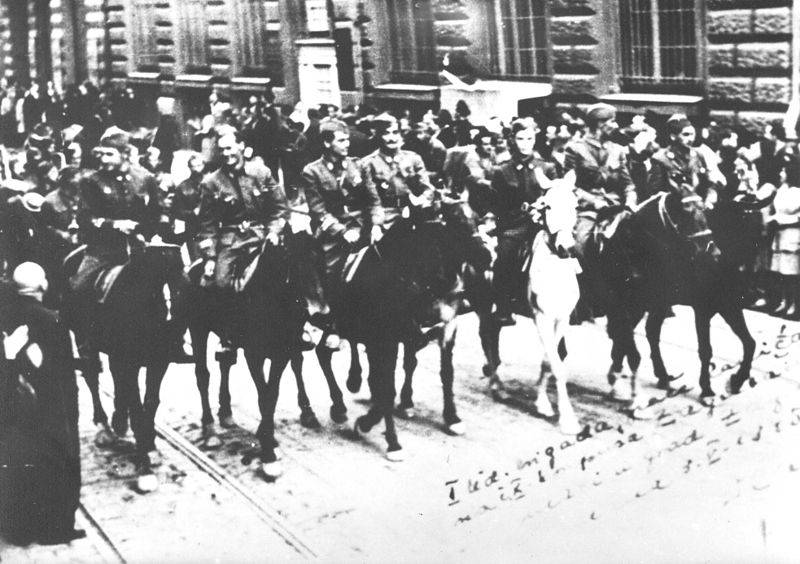
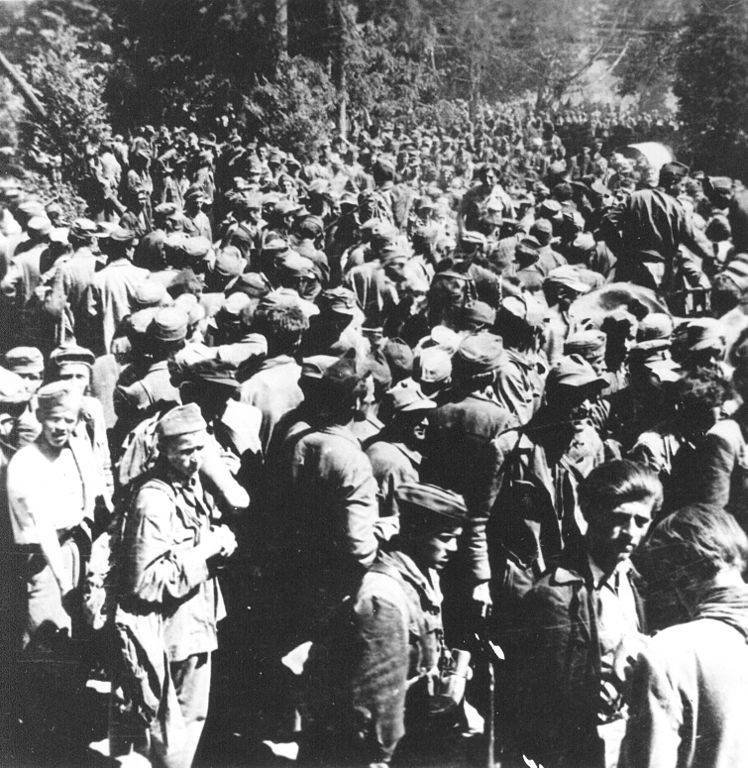
Uprising of Queen Tamara
In April 1945, former Red Army prisoners on the island of Texel (West Frisian Islands, the Netherlands) rebelled. Texel Island was part of the so-called defensive system. Atlantic shaft. In 1943, the Germans in Poland formed the 822nd Georgian infantry battalion ("Königin Tamara", "Queen Tamara") from the captured Georgian soldiers as part of the Georgian Legion (about 800 people). The battalion was transferred to the Netherlands. In 1944, an underground anti-fascist organization appeared in the unit. The Nazis, suspecting that the battalion was unreliable, transferred him to Texel Island in February 1945. There, Georgian soldiers performed auxiliary functions.
On the night of April 5-6, 1945, hoping for a speedy landing of the Allied forces, the former Red Army rebels with the help of the Dutch resistance rebelled and captured most of the island. About 400 German soldiers were slaughtered. The rebels were unable to capture well-fortified German batteries. The Germans landed troops from the mainland, threw into battle about 2 thousand people of the Marine Corps. After two weeks of hard fighting, the rebels were defeated. The rebels lost over 680 people killed (over 560 Georgians and over 110 Dutch). The remnants of the rebel battalion retreated to the inaccessible places of the island, switched to the position of partisans and continued to resist. The fighting continued after the official surrender of Germany on May 8, 1945. Only on May 20, Canadian troops landed on the island and stopped fighting.
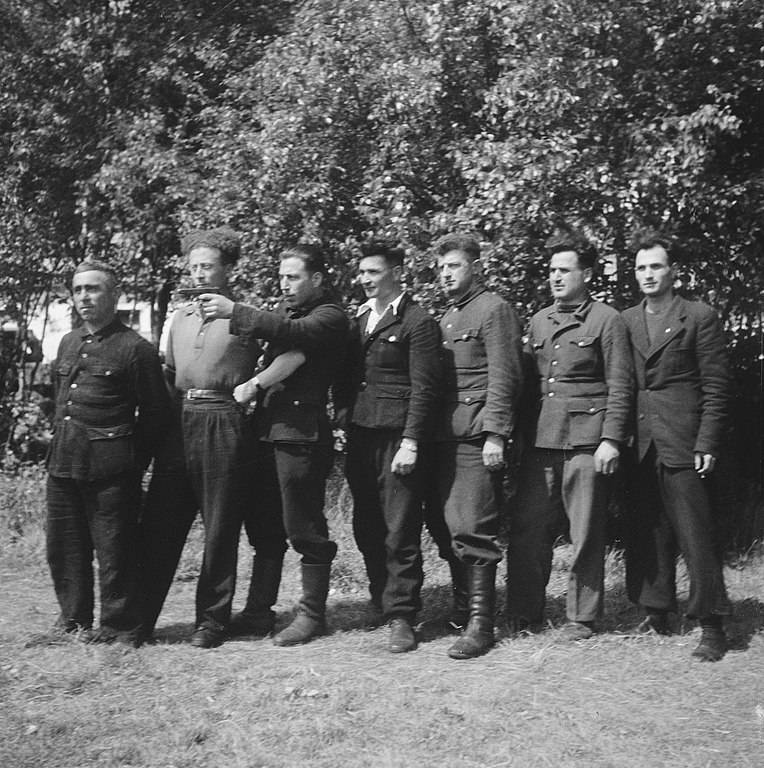
Baltic Spit and Courland
Already after the fall of the Reich, the last "cauldrons" capitulated, where German troops were blocked. During the East Prussian operation, the Red Army defeated the East Prussian Wehrmacht group. On April 9, Soviet troops captured Koenigsberg, and at the end of April the Zemland group was destroyed. On April 25, the last bastion was taken - the fortress of the Zemland group and the Pillau naval base. The remains of the defeated German group (about 35 thousand people) were able to evacuate from the Zemland Peninsula to the Frisch-Nehrung Spit (now the Baltic Spit).
So that these troops were not deployed for the defense of Berlin, the Soviet command decided to land on the spit and finish off the Nazis. On April 25, the advanced forces of the Red Army seized the bridgehead on the spit. On April 26, eastern and western landing troops were landed on the spit. They cut the Frishe-Nehrung scythe and connected with troops moving from the north. Part of the German group in the northern part of Frisch-Nehrung was blocked and captured. However, the subsequent operation did not lead to success. The Germans stubbornly fought back, taking advantage of the convenience of the terrain for defense - a narrow spit was blocked by many fortified positions. Soviet troops lacked artillery to destroy enemy defenses. The mistakes of the Soviet command affected, it was not possible to establish interaction between the ground forces and fleet.
As a result, it was decided to abandon the offensive. The Germans were tightly blocked and kept under fire from artillery and air strikes. Part of the German group were able to evacuate by sea. But most of them were captured after May 9, 1945 (about 22 thousand soldiers and officers).
Another "boiler" was eliminated in Courland. In the western part of Latvia, part of the German Army Group North (the 16th and 18th armies) was blocked back in the autumn of 1944. The Germans held the front along the Tukums-Liepaja line. The group initially had about 400 thousand people. At the same time, the Nazis maintained contact with the Reich by sea. The Red Army made several attempts to eliminate the enemy group, but without success. The Germans created a strong and dense defense, which relied on convenient terrain (impenetrable forests and swamps). There were a lot of troops, the front was small, so a significant part of the divisions could be put in the second or third echelons, withdrawn to the reserve. In addition, the Soviet troops (1st and 2nd Baltic fronts) did not have a serious advantage over the enemy in order to quickly break into its defense.
As a result, the Germans sat in Courland until the very end of the war. Some of the troops were transferred for the defense of Germany, by the time of surrender in Courland there were about 250 thousand people. Our troops made the last attempt to break into enemy positions in May 1945, but without much success. Only on May 10, 1945, the commander of the Courland group General Karl Hilpert gave the order for surrender. At the same time, certain groups of Reich soldiers, mainly SS men, tried to break into East Prussia. So, on May 22, a German group was destroyed, led by the commander of the 6th SS corps, Walter Krueger. The corps commander shot himself. Until July 1945, shots thundered in Courland, the Nazis and Latvian SS legionnaires fought to the last.
The last "hunters"
On March 25, 1945, the German submarine U-234, under the command of Captain Lieutenant Feler, left the port of registry of Kiel and headed for Norway. The submarine carried out a secret mission. She was supposed to strengthen the combat potential of an allied Japan. On board the submarine were important passengers, military experts, including Air Force General Ulrich Kessler, who was supposed to lead the Luftwaffe units located in Tokyo, Heinz Schlick, a specialist in radar technology and electronic jamming, August Bringewalde, one of the leading specialists in jet fighters, and other experts. Also on board were Japanese officers who adopted military experience in the Reich. There were also special cargoes aboard the submarine: various technical documentation, prototypes of the latest electric torpedoes, two disassembled Messerschmitt 262 fighter jets, a Henschel Hs 293 guided missile (projectile) and uranium oxide cargo in lead boxes weighing about 560 kg .
On April 16, Feler's ship left Norway. On May 10, Feler received news of the surrender of the Reich and the order of Admiral Dönitz to all submarines to cease hostilities, return to bases or surrender. Feler decided to surrender to the Americans. Japanese officers, not wanting to give up, committed suicide. On May 14, 1945, an American destroyer intercepted a submarine in the Greater Newfoundland Bank area and took it to the waters of the Portsmouth Naval Shipyard, which had previously surrendered German submarines.
May 2, 1945 from the Norwegian Kristiansannan went hunting for U-977 submarine Lieutenant Heinz Schaffer. Having accepted the surrender order on May 10, the team decided to go to Argentina. 66 days the boat went without surfacing. This dive was the second longest in the entire war. The longest was carried out by U-978, which went without floats for 68 days. On August 17, the submarine was interned in Mar del Plata, Argentina. In total, the passage across the ocean lasted 108 days. In November, the ship was transferred to the United States.
The last German unit continued to serve the Reich on an island in the Barents Sea. The Germans (Luftwaffe and Abwehr operation) equipped a weather station on Bear Island south of West Svalbard. They lost radio contact with the command and did not know that the war was over. They only found out about this in September 1945 from Norwegian hunters. Upon learning of the end of the war, the Germans showed no resistance.
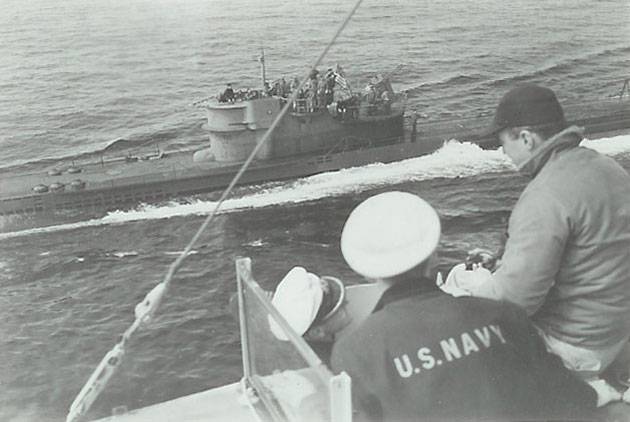
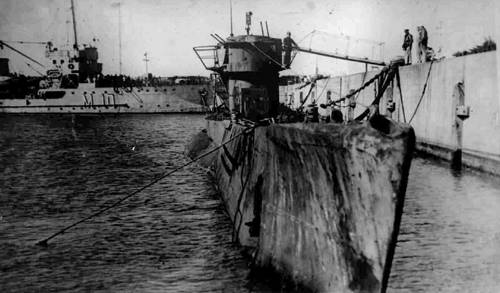
Information